Exploring New York’s Industrial Past in "Cathedrals of Industry"
Join photographer Michael L. Horowitz for a journey through 50 years of photographs!

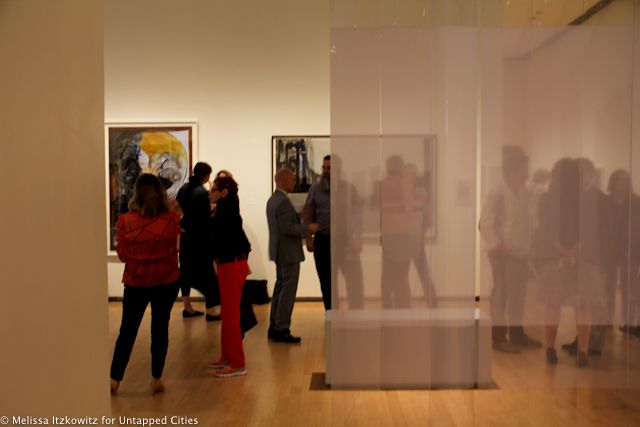
If you’re looking for cutting-edge work in photography and video art, the International Center of Photography (ICP) is the place to go. Their fourth Triennial, A Different Kind of Order, opened on Friday and it showcases work by some of the best and brightest contemporary artists. The curators, Kristen Lubben, Christopher Phillips, Carol Squiers, and Joanna Lehan, took digital modes of creation as a given and set out to create a show that would push the boundaries of photography to see how far it can go.
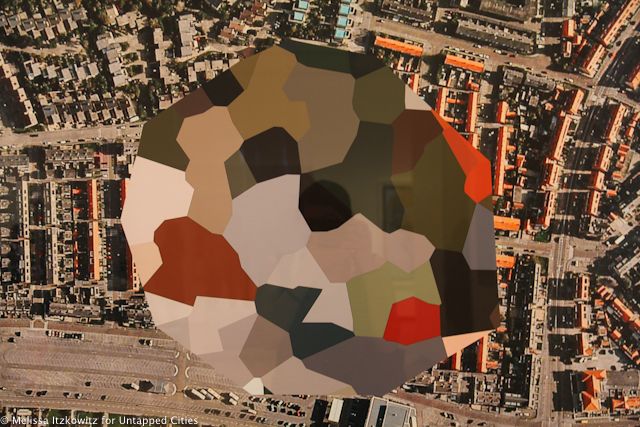
Some of the work leans toward conceptual art, and the “photographer” is not always the one taking the photographs. Some of the most interesting and provocative work uses found images. Right at the entrance, Belgian artist Mishka Henner has images from Google Maps blown up and framed. What at first seems to be the artist’s abstractions in the middle of the images were actually placed there by Google Maps in order to camouflage military bases and other top-secret areas. When the camouflage started drawing more attention to these places than they wanted, Google Maps ceased to use it, so you won’t see these kinds of images anymore. Henner did not create anything but rather used these found images as a concept piece, and their placement at the forefront of the show makes a loud statement about the curators’ definition of contemporary photography.
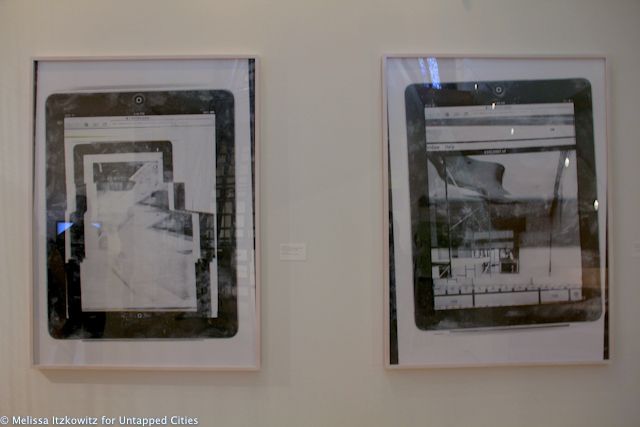
Another artist who pushes the boundaries of digital work is LA-based artist Andrea Longacre-White, who has two large black and white images of iPads on the wall immediately as you go downstairs. The images are slightly off-kilter and imperfect but attention-grabbing. Longacre-White actually took photographs of ICP’s interior, emailed the jpegs to herself, opened them on an iPad and placed it face-down on a flat-bed scanner. In the process, the iPad confused the heat from the scanner as a touch command and began shifting to another page. The result is a blurred image that seems to be commenting on the way different forms of technology interact with each other.
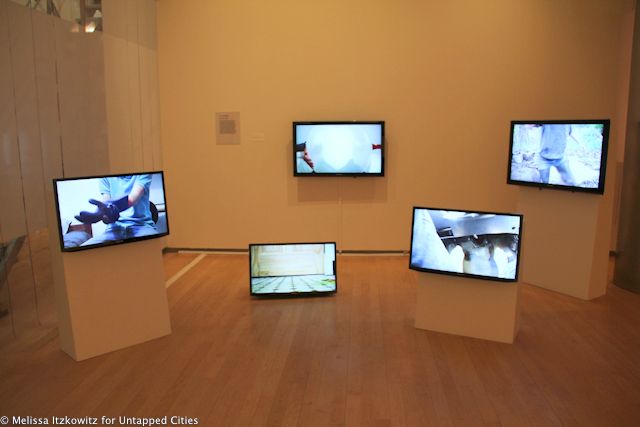
Perhaps the artist who presented the most thought-provoking intersection between photography and conceptual art is A.K. Burns, whose video installation Touch Parade occupies an important place near Longacre-White’s iPad images. Just as Henner used found images, so did Burns, who recreated obscure fetish videos found on YouTube. Far from S&M and other overtly sexual fetishes, these videos seem odd but innocuous, and so go undetected by YouTube’s censors. On one screen, the artist puts on white Keds and crushes carrots and cucumbers underfoot. In another, she wades knee-deep into a mud-hole wearing thigh-high rubber boots. And a highly specialized fetish has the artist driving a stick-shift car barefoot. Burns frequently explores themes of sexuality and sexual identity in her work, though, ironically, you would never know that there is a sexual undertone to these videos just by looking at them. Burns’s installation is surprising and thrilling, as it seems totally bland until you learn the story behind it.
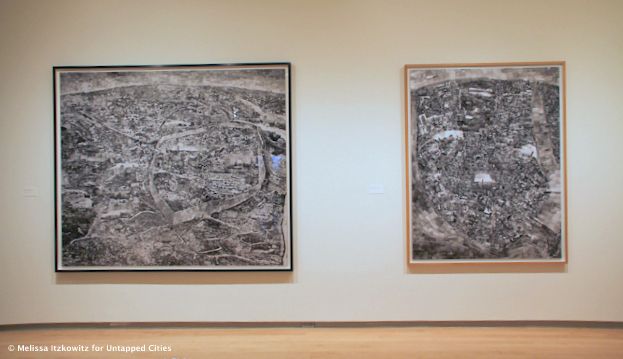
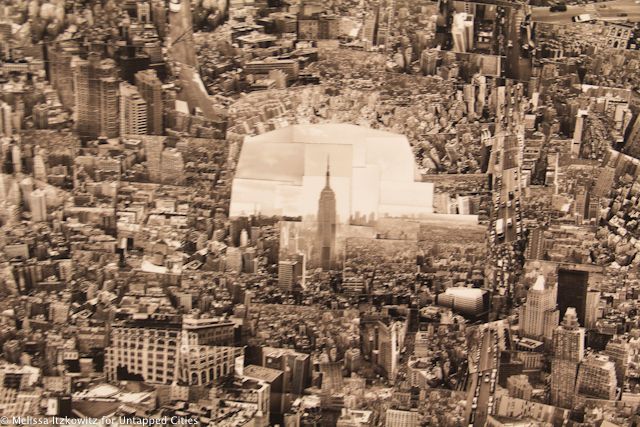
Tokyo-based artist Sohei Nishino defies the rules and expectations of photography in a different way. Since 2004, he has been making large scale Diorama Maps. Simply put, Nishino’s Diorama Maps are visually stunning. From far away, you see a cohesive photographic map of a city—New York City and Jerusalem are shown at ICP, though he has done several more. Close-up, you realize that the maps are created from thousands of prints that have been cut up and reassembled. Nishino typically spends a month in a city, walking its streets and photographing its landmarks on a 35mm film camera. He then prints contact sheets from the negatives, cuts out each image and rearranges them by hand. Not only is the process unusual, but the goal is not the typical photographer’s goal of documenting a place. Nishino does not present a geographically accurate map or an objective representation of the city. Rather, he creates a collage that conveys his impressions of the place and what makes it tick.
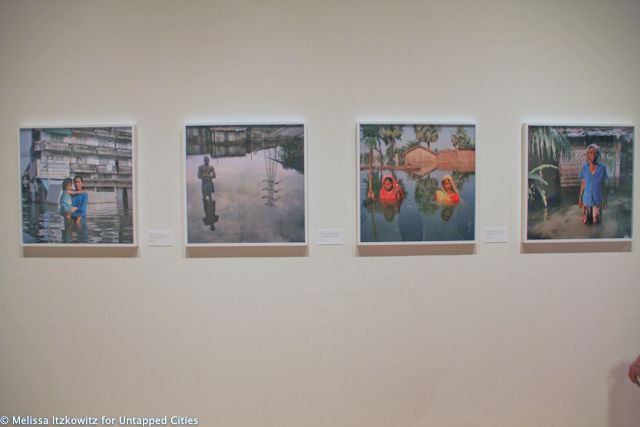
A few more artists worth mentioning are Gideon Mendel, Patrick Waterhouse & Mikhael Subotzky, Thomas Hirschhorn, and Nayland Blake. Mendel’s photo-journalistic images from the series Drowning World are striking both as portraits and as documentation of the problem of floods in African and Southeast Asia, where people don’t have the resources to clean up and rebuild their homes.
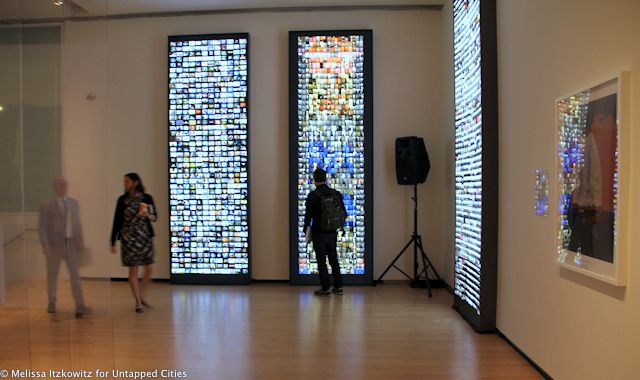
British artist Patrick Waterhouse and South African photographer Mikhael Subotzky teamed up to do a photographic investigation of Ponte City, Johannesburg’s 54 story apartment tower that became a symbol of post-apartheid struggles. Waterhouse and Subotzky’s three enormous lightboxes show every internal door, window and TV in the tower, providing a close-up view of the lives of Ponte City’s inhabitants.
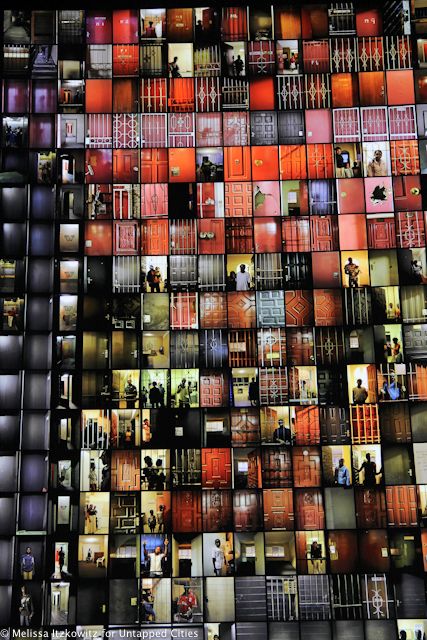
Swiss artist Thomas Hirschhorn, whose monumental installation Concordia, Concordia made a splash at Gladstone Gallery in Chelsea last fall, makes a bold statement about the suppression of gruesome photos by the news media. In a small room all the way in the back, Hirschhorn’s five-minute video installation shows a hand scrolling through gory photographs of the casualties of war and political turmoil on an iPad. Every now and then, the hand pauses to enlarge a particular detail, forcing viewers to see it rather than look away, as the media does. Hirschhorn will be speaking in the ICP lecture series on May 29.
Finally, Nayland Blake curated images from ICP’s archives and organized his work around the theme of gay identity in 1970s New York, a time before iPhones and Tumblr, when young people were defining themselves by the action on the streets.
All in all, the ICP Triennial, A Different Kind of Order, is an exciting compilation of many different modes of photographic creation. It will be on view until September 8, 2013 and will host a lecture series and other events during the summer. Get in touch with the author @lauraitzkowitz.
Subscribe to our newsletter